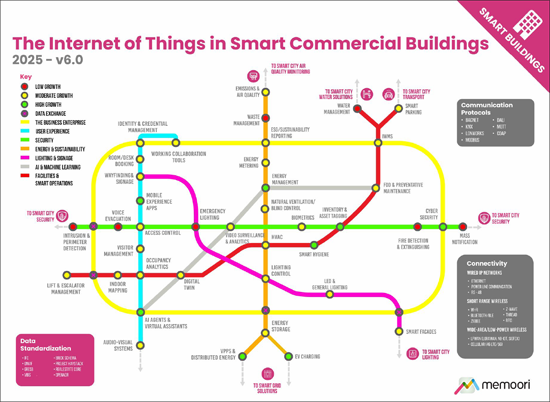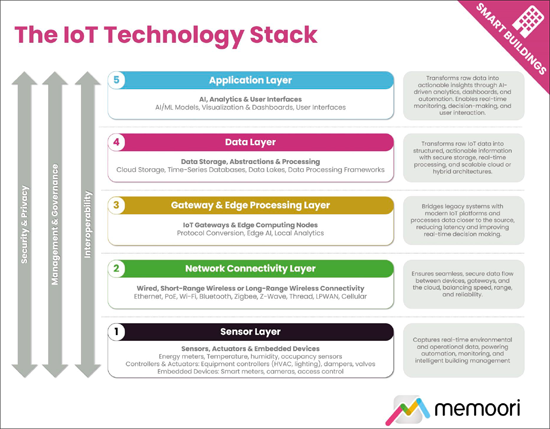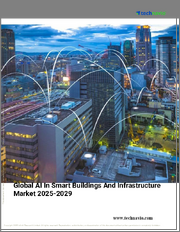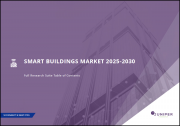
|
시장보고서
상품코드
1669753
스마트 상업 빌딩의 IoT 디바이스(2025-2030년) - 디바이스 예측, 보급, 메타 동향 분석IoT Devices in Smart Commercial Buildings 2025 to 2030 - Device Projections, Adoption & Meta-Trends Analysis |
||||||
상업 빌딩 부문은 2030년까지 IoT 도입이 2배 이상 증가한 41억 2,000만 건에 달할 것으로 예측되는 등 기술적 변곡점에 서 있습니다.
AI와 IoT 시스템의 통합은 전례 없는 기능을 창출하고 있으며, 스마트 빌딩의 AI 솔루션 시장은 CAGR 25.5%로 성장하여 2028년 65억 달러에 달할 것으로 예상됩니다. 보안 취약점은 견고한 프레임워크를 필요로 합니다. 최근 이슈가 된 사건들은 통합 보안 전략의 중요성을 강조하며, 다음과 같은 보안 전략의 채택을 촉진하고 있습니다.
본 보고서에서는 스마트 상업 빌딩의 IoT 디바이스 시장을 조사하고, 오피스, 리테일, 호스피탈리티, 데이터센터 등 상업용 부동산의 각 분야에서의 디바이스 보급, 기술 도입 패턴, 구현 프레임워크 등에 대해 조사하여 제공합니다.
샘플보기

이 보고서의 상세한 세분화 분석과 기술 로드맵은 복잡한 스마트 빌딩 환경을 탐색하고, 당면한 비즈니스 기회를 파악하는 동시에 다음과 같은 장기적인 변화에 대비할 수 있는 중요한 지침을 제공합니다.
샘플보기

목차
서문
주요 요약
제1장 IoT 생태계
- IoT의 정의
- IoT 테크놀러지 스택
- 사물인터넷 구축
제2장 IoT 구축에서 AI의 역할
- IoT 센서 네트워크에서 AI의 진화
- AI와 IoT 융합
- AI 투자와 도입 동향
- AI 하드웨어와 처리
- 엣지 AI
- 구현 과제와 전략적 추천사항
제3장 IoT 테크놀러지 상황
- IoT 디바이스 예측
- 용도별 IoT 디바이스
- IoT 센서 접속
- 상업 빌딩 업계별 IoT 디바이스
- 지역별 IoT 디바이스
- 센서 기술 준비와 성숙도
- IoT 디바이스의 혁신과 새로운 기회
제4장 구현 과제와 해결책
- 시스템 통합과 상호운용성
- 보안, 프라이버시, 데이터 소유권
- 비용 정당화와 사업 사례
- 디바이스 관리와 가시성
- 기존 건축 시스템 개선
제5장 메타 동향 분석
- 시장 투자와 채용 동향
- 거시경제 전망
- 지정학적 동향
- 부동산 동향
- CRE 건설 전망
- 환경, 사회, 지배구조 동향(ESG)
- IoT 스킬과 구인 시장
제6장 표준과 프로토콜
- 오픈 스탠다드의 중요성
- 빌딩 자동화 프로토콜
- 애플리케이션 층 프로토콜
- IoT 보안 표준
- 데이터 모델과 프레임워크
- 표준의 통합과 상호운용성의 대처
The Definitive Market Report on IoT Devices & Connectivity Transforming Commercial Real Estate through 2030
The commercial building sector stands at a technological inflection point, with IoT deployments projected to more than double to 4.12 billion by 2030. Our new market assessment provides unprecedented insights into device proliferation, technology adoption patterns, and implementation frameworks across commercial real estate verticals including offices, retail, hospitality, and data centers.
Based on primary research and rigorous data analysis, this report delivers the market intelligence needed to navigate the rapidly evolving smart building landscape. It examines the convergence of IT and OT systems, emerging connectivity protocols, AI integration, and critical security considerations that are fundamentally reshaping how commercial buildings operate and interact with occupants.
The research includes a spreadsheet with all the data tables AND a presentation file with high-resolution versions of the charts.
SAMPLE VIEW

KEY QUESTIONS ADDRESSED ABOUT IOT DEVICES
- How many connected IoT devices have been installed in commercial smart buildings? Memoori estimates that the installed base of IoT devices in commercial buildings is approximately 2 billion and is expected to grow to 4.12 billion by 2030. The report breaks this down by both technology vertical and building type.
- How are connectivity technologies evolving in smart buildings? Wireless technologies (Wi-Fi and Bluetooth/BLE) continue to grow their market share and will represent over 40% of all connections by 2030. The report forecasts sensor adoption by connectivity type across commercial buildings to 2030.
- What are the primary implementation challenges for smart building IoT systems? Organizations face significant integration hurdles from siloed building systems, with 81% reporting IoT-related cyber incidents and over 90% of sensor-generated data remaining unexploited due to technical fragmentation and organizational barriers between IT and operations teams.
The detailed segmentation analysis and technology roadmaps in this report provide essential guidance for navigating the complex smart building landscape, identifying immediate opportunities while preparing for longer-term shifts toward grid-interactive buildings and AI-driven autonomous operations.
Unlike broader IoT market reports, this research specifically addresses the unique requirements of commercial buildings through rigorous bottom-up and top-down modeling approaches. Our dual methodology incorporates detailed building stock analysis, technology adoption metrics, and regional variations validated by industry experts across the supply chain.
WITHIN ITS 243 PAGES AND 15 CHARTS AND TABLES, THE REPORT FILTERS OUT ALL THE KEY FACTS AND DRAWS CONCLUSIONS, SO YOU CAN UNDERSTAND EXACTLY WHAT IS SHAPING THE FUTURE OF COMMERCIAL SMART BUILDINGS.
- AI is transforming building intelligence. The integration of AI with IoT systems is creating unprecedented capabilities, with the market for AI solutions in smart buildings projected to grow at a rate of 25.5% CAGR to reach $6.5 billion by 2028, enabling predictive analytics that has demonstrated significant reductions in HVAC energy consumption.
- Security vulnerabilities demand robust frameworks. Recent high-profile incidents highlight the critical importance of integrated security strategies, driving adoption of NIST, ISO/IEC 27001, and Zero Trust Architecture.
- Standards convergence is accelerating interoperability. The industry is seeing an increase in standards collaboration with Project Haystack, Brick Schema, and ASHRAE developing 223P for unified data semantics, while Matter protocol expansion bridges traditional gaps between residential and commercial systems.
This report provides valuable information to companies so they can improve their strategic planning exercises AND look at the potential for developing their business.
WHO SHOULD BUY THIS REPORT?
The information contained in this report will be of value to all those engaged in managing, operating, and investing in commercial smart buildings (and their advisers) around the world. In particular, those wishing to understand exactly how the Internet of Things is impacting commercial real estate will find it most useful.
SAMPLE VIEW

The model above illustrates the core components of the IoT technology stack, showing the five main layers together with three cross-cutting considerations, Security & Privacy, Management & Governance, and Interoperability.
Table of Contents
Preface
The Executive Summary
1. The IoT Ecosystem
- 1.1. Defining the IoT
- 1.2. The IoT Technology Stack
- 1.3. The Building Internet of Things
2. AI's Role in The Building Internet of Things
- 2.1. The Evolution of AI in IoT Sensor Networks
- 2.2. The Convergence of AI and IoT
- 2.3. AI Investment & Adoption Trends
- 2.4. AI Hardware & Processing
- 2.5. Edge AI
- 2.6. Implementation Challenges & Strategic Recommendations
3. The IoT Technology Landscape
- 3.1. IoT Device Projections
- 3.2. IoT Devices by Application
- 3.3. IoT Sensor Connectivity
- 3.4. IoT Devices by Commercial Building Vertical
- 3.5. IoT Devices by Region
- 3.6. Sensor Technology Readiness & Maturity
- 3.7. IoT Device Innovations & Emerging Opportunities
4. Implementation Challenges & Solutions
- 4.1. System Integration & Interoperability
- 4.2. Security, Privacy & Data Ownership
- 4.3. Cost Justifications & Business Case
- 4.4. Device Management & Visibility
- 4.5. Retrofitting Legacy Building Systems
5. Meta Trend Analysis
- 5.1. Market Investment & Adoption Trends
- 5.2. Macro Economic Outlook
- 5.3. Geopolitical Trends
- 5.4. Real Estate Trends
- 5.5. CRE Construction Outlook
- 5.6. Environmental, Social & Governance Trends (ESG)
- 5.7. IoT Skills & Job Markets
6. Standards & Protocols
- 6.1. The Importance of Open Standards
- 6.2. Building Automation Protocols
- 6.3. Application Layer Protocols
- 6.4. IoT Security Standards
- 6.5. Data Models & Frameworks
- 6.6. Standards Convergence & Interoperability Initiatives


















